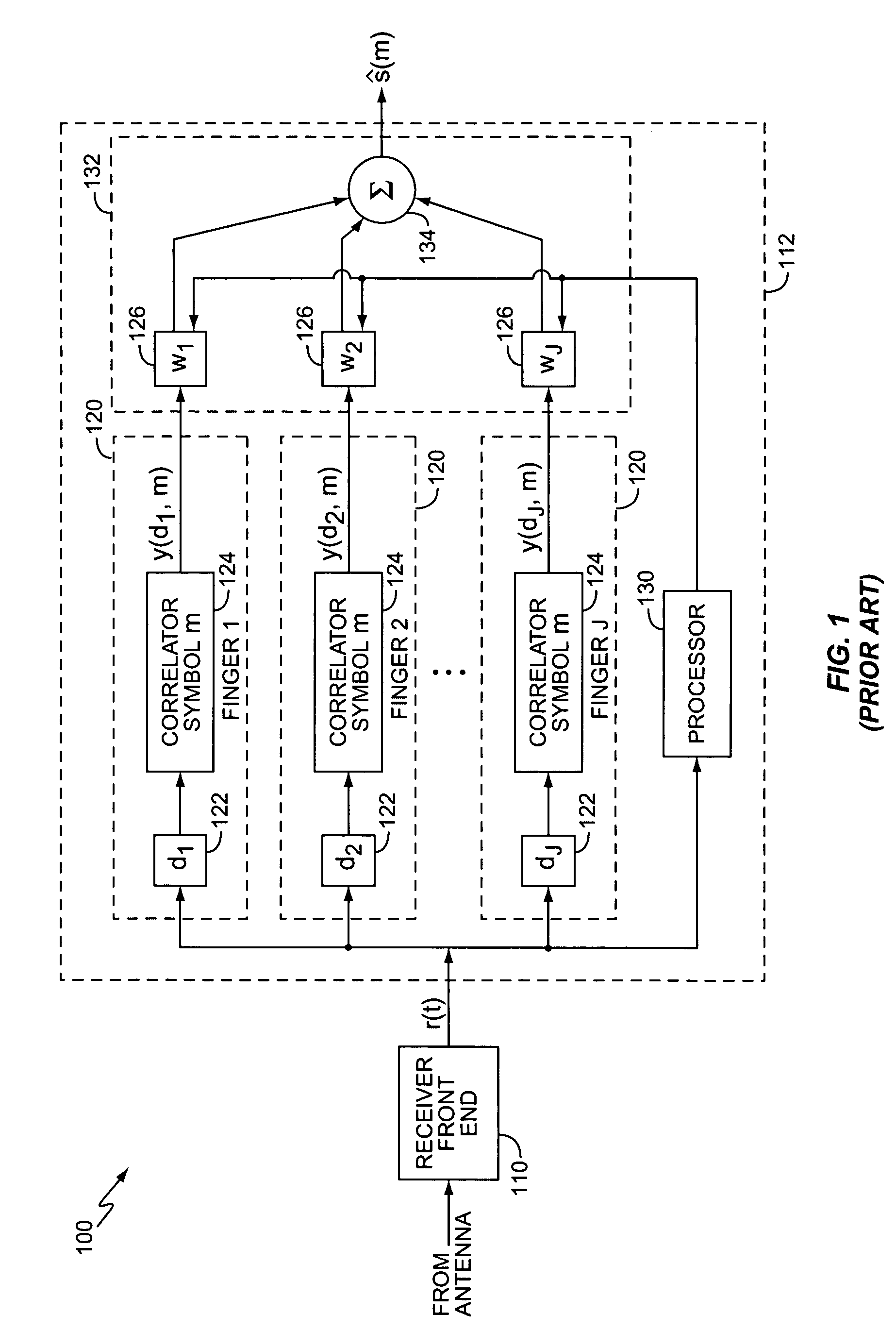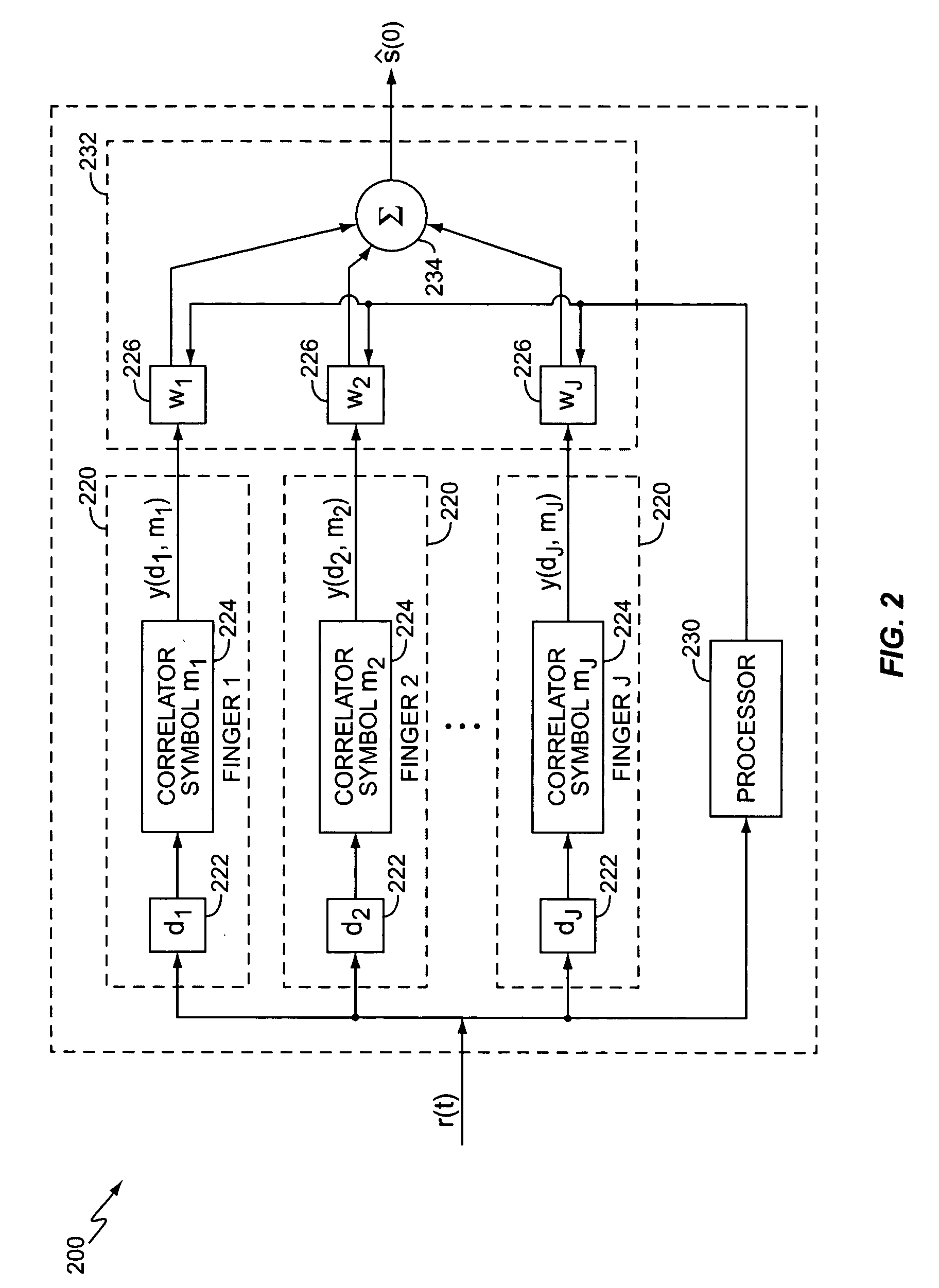Method and apparatus for DS-CDMA interference suppression using code-specific combining
a code-specific combining and interference suppression technology, applied in the field of interference suppression of rake receivers, can solve the problems of interference between echoes and different path delay, phase and attenuation effects of each multi-path echo, etc., and achieve the effect of reducing interference and reducing interferen
- Summary
- Abstract
- Description
- Claims
- Application Information
AI Technical Summary
Benefits of technology
Problems solved by technology
Method used
Image
Examples
Embodiment Construction
[0017]FIG. 1 illustrates a conventional wireless communication receiver 100 utilizing a generalized-RAKE (G-RAKE) 112. Wireless communication receiver 100 comprises receiver front end 110 and G-RAKE 112. The receiver 100 and / or the G-RAKE 112 may be embodied in an application specific integration circuit (ASIC). Receiver front end 110 outputs received signals r(t) to G-RAKE 112. These received signals r(t) comprise streams of sample values obtained from wireless signals received by one or more antennas associated with one or more receiver front ends 110. An exemplary front end 110 may include amplifiers, filters, mixers, digitizers, and / or other electronics as needed to produce a sampled signal suitable for processing by the G-RAKE 112. The received signal r(t) output to G-RAKE 112 typically comprises a composite signal that includes one or more multi-path echoes arising from multi-path propagation and which arrive at the receiver 100 from different directions and with different tim...
PUM
 Login to View More
Login to View More Abstract
Description
Claims
Application Information
 Login to View More
Login to View More - R&D
- Intellectual Property
- Life Sciences
- Materials
- Tech Scout
- Unparalleled Data Quality
- Higher Quality Content
- 60% Fewer Hallucinations
Browse by: Latest US Patents, China's latest patents, Technical Efficacy Thesaurus, Application Domain, Technology Topic, Popular Technical Reports.
© 2025 PatSnap. All rights reserved.Legal|Privacy policy|Modern Slavery Act Transparency Statement|Sitemap|About US| Contact US: help@patsnap.com



